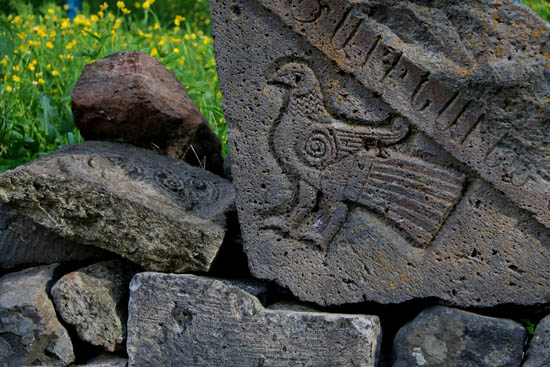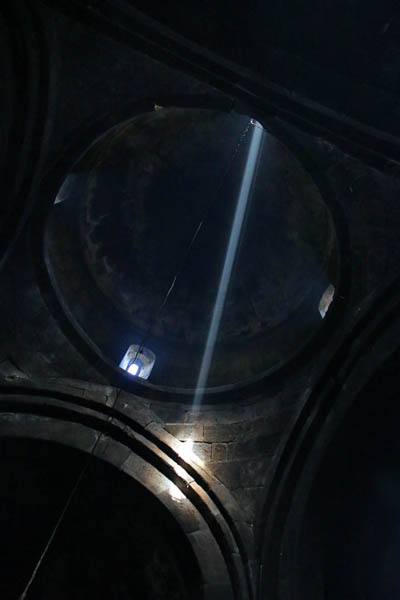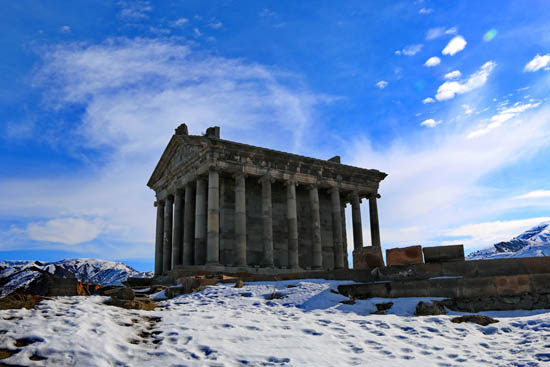

The Hellenistic temple of Garni is an anomaly in Armenia. On the plateau above the deep gorge, where one would expect a squat Caucasian church with a conical roof, a perfect Greek temple with tympanum and columns rises atop a high row of stairs, as if space-time had been confused for a moment, and the road under the Ararat suddenly turned up between the mountains of the Peloponnese. Its contemporaries probably experienced a similar sense of being out of space-time when, in 66 AD, King Tiridates I broke the six-century-long Persian alliance, and traveled to Rome, where he received from Nero a royal crown, an ally’s handshake and fifty million drachmas to provide his mountain kingdom with fortresses against the Persians. The center of the fortification system was the royal capital of Artashat, near present-day Khor Virap Monastery, and its northern key point the fortress of Garni with the temple dedicated to the Sun God, to whom they continued to pray under its Persian name Mihr.
We do not know how the temple managed to survive after the conversion of Armenia to Christianity, but in 1679 it certainly stood still, because in that year it was ruined by an earthquake starting from the gorge as its epicenter. Its rebuilding was repeatedly suggested. Already in tsarist times they wanted to move it over to Tiflis, where it would have authenticated with the authority of the first Rome the Caucasian rule of the third Rome. Nevertheless, it was restored only in 1975 by the Yerevan academician Alexander Sahinian. The reconstruction is convincing, the many well-marked supplements among the preserved marble blocks are not disturbing. However, the most authentic elements are the graffiti, which testify that the temple has set a challenge to the sense of reality of the visitors over the centuries. The memento in seventh-century Kufi handwriting – “In the name of Allah, the compassionate and merciful, Ahmed was here” – was probably carved into the base by an Arab conqueror, while the 16th-century Persian merchant asked God’s blessing on his journey after having drunk and eaten here. We step in their footprints, even if we leave a mark about our visit not on the wall of the temple, but on that of Facebook.

In the outskirts of the village, police cars are stationed, blocking the road, with a long row of cars behind them. Excited Armenian drivers argue with the policemen who stand with adamant posture. One of the policemen moves along the row of cars, he urges them to turn back. A driver jumps out, attacks him, they begin to fight. The others separate them. I go forward. “Can’t we go any further?” “No.” “Look, we are a Hungarian group, once in a life we get to Garni, and we should turn back now, in the finish?” The officer hesitates a little, and then he beckons. “Go.” We happily drive on, past the stunned Armenian drivers. After a few kilometers, a new police cordon. Here, even the reference to the Hungarian group is of no use, we can go on only on foot, but we are only one kilometer from the temple. “Why can’t we go on by bus?” I ask. “I do not know”, the officer says. “Well, then it is definitely politics, isn’t it?” I poke his chest. He grins. “You said it.”



Soon a third cordon appears, this time a civilian one. A sky blue minibus across the street, with Armenian slogans on its side. The difference of the length of the car and of the road are filled with rocks and brushwood. In front of it, excited groups are discussing, old men are sitting along the street, black crows on the bar of the road. “Zdravstvuyte”, I stop before them, like Ostap Bender from the Golden Calf. “What’s going on here?” From the crackling Armenian sounds I only understand “Rusuli”, they are looking for a “language”. One of the old men beckons me to himself. “We have a small river. Do you go to the temple? Well, then, if you look down in the valley, you will see it. The county council wants to lead away a large part of it by pipe, to the reservoir. Well, we live from it, we irrigate our lands from it. We do not give it away. The negotiations have been going on for a year, but we have not got anything. Now, two days ago, we blocked the road, we finally want a decision.” “
Molodtsy, well done”, I praise him. “And does it have any result?” “Today at four in the afternoon the President of the Republic will come out, we want to have him promise that they don’t take away our river.” “And how’s that only you, men are here? Where are the women?” “Now at home, but don’t worry, by four they will also come out.” “
Udachi, much success”, we bid farewell.
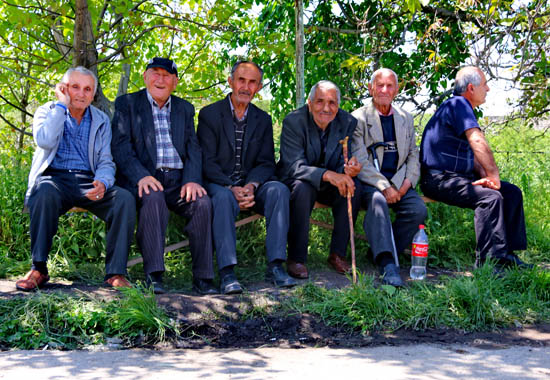
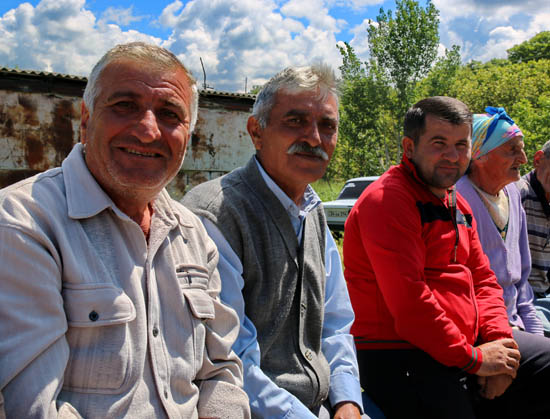
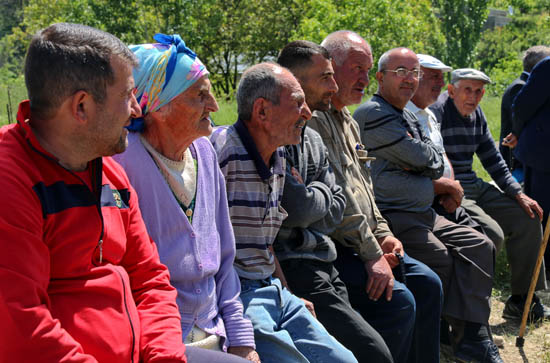
In front of the temple there are several stands, most of them closed because of the drop in tourist traffic, but some are holding out. An old woman is selling pomegranate wine, both by the liter and bottled. I recommend it to the others, in case they want to buy some local gift. “Can’t we get it in Yerevan?” Cesare asks. “It is not easy to carry it on the way back for a kilometer.” “Of course we can, but I always prefer to buy from local vendors, it supports them.
Local business,” I say.
As we are heading back, cars arrive at the temple, tourists get out of them. Every Armenian was or will be a taxi driver, this is an innate job for them, not much is needed to activate it. The local car owners have recognized the unexpected business opportunity, and they are carrying the passengers of the tourist buses stopped at the police cordon.
“Local business”, Cesare says.
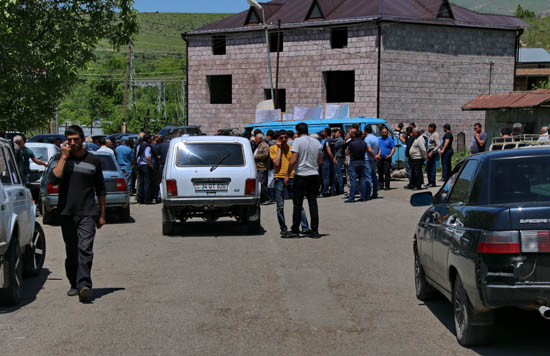
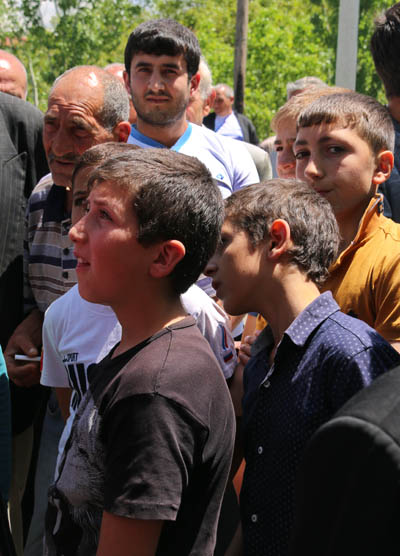
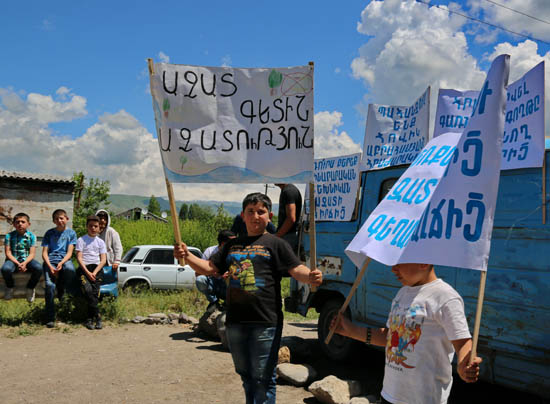
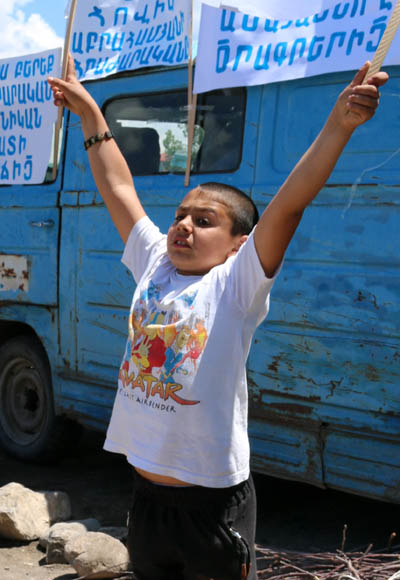
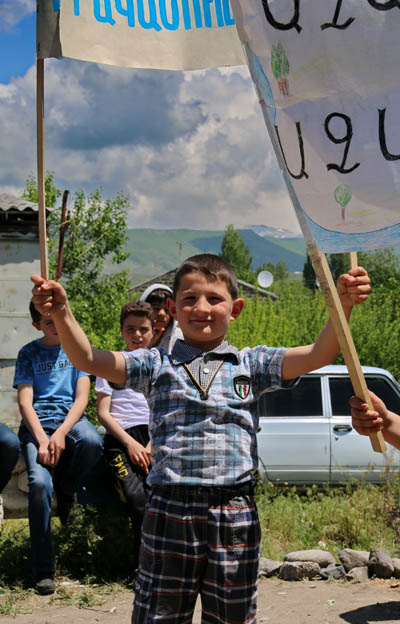
By the time we reach the cordon, the TV is also there, they are just interviewing the parliamentary representative of Garni, a particularly bad-looking man, just like his companions, thick-necked, confident-looking mafiosi. I do not understand him, but I can more or less imagine what he is promising and how much of it is believed by the crowd standing around him. The children threateningly raise in the air the posters, so the rarely seen guest could easily see them. “Do such things also happen in your country?” the young cameraman asks me at the end of the interview. I would be pleased to tell him that no, never. “Our government is no better”, I console him. “Idiots there, as well?” he grins. “Let’s exchange them, we give you these, you give us your idiots.” he says. “You would not be better off”, I’m protecting Armenia.
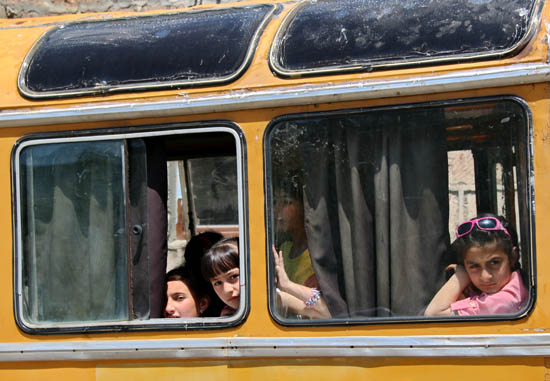
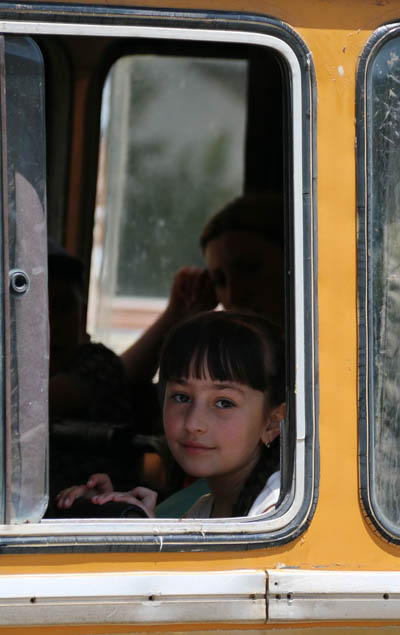
At the cordon, a few tourist buses,
marshrutkas, school buses are waiting for their passengers arriving back on foot. When passing by the policemen, I beckon them, say goodbye aloud to them. They all respectfully beckon and greet us, they are grateful for the human word after a day spent with exhaustive quarreling.
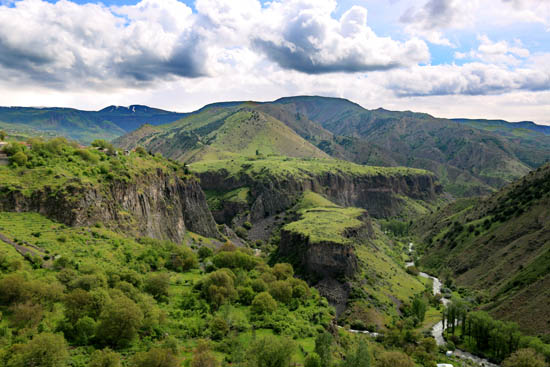


 Ushguli is the highest inhabited point of Europe, if you draw the borders of Europe on the basis of where the twelve-star flag is put on border stations and public buildings. On this basis, Georgia is Europe, and my native Hungary is not. In the narrow valley of Svaneti along the Inguri, it was possible to expand only upwards. For three thousand years, every inch of arable land found its owner. From Ushguli there is no more upwards, the ever-snowy border mountains rise here. On the other side lies Kabardino-Balkaria in Russia, and the Elbrus. The treasures, icons and codices saved from the enemy invading the plains also marched up the valley, and the ones that were not reclaimed by the owner after the invasion have remained here. The three village districts of Ushguli are dotted by seventh- and eight-century fortress towers. The most massive of which, in the middle village, houses such a rich museum that would be the pride of any great city. On the sides of the towers, satellite dishes, in the towers, LCD monitors, on which the little Svans study where they would have to go to win their victories, as their ancestors have done for thousands of years. Next to the towers, mud mingles with cow dung.
Ushguli is the highest inhabited point of Europe, if you draw the borders of Europe on the basis of where the twelve-star flag is put on border stations and public buildings. On this basis, Georgia is Europe, and my native Hungary is not. In the narrow valley of Svaneti along the Inguri, it was possible to expand only upwards. For three thousand years, every inch of arable land found its owner. From Ushguli there is no more upwards, the ever-snowy border mountains rise here. On the other side lies Kabardino-Balkaria in Russia, and the Elbrus. The treasures, icons and codices saved from the enemy invading the plains also marched up the valley, and the ones that were not reclaimed by the owner after the invasion have remained here. The three village districts of Ushguli are dotted by seventh- and eight-century fortress towers. The most massive of which, in the middle village, houses such a rich museum that would be the pride of any great city. On the sides of the towers, satellite dishes, in the towers, LCD monitors, on which the little Svans study where they would have to go to win their victories, as their ancestors have done for thousands of years. Next to the towers, mud mingles with cow dung.






















